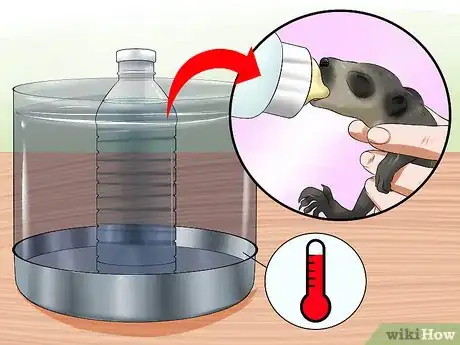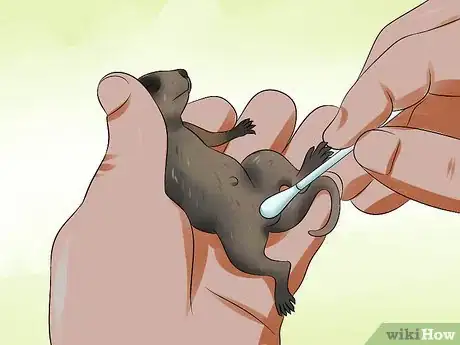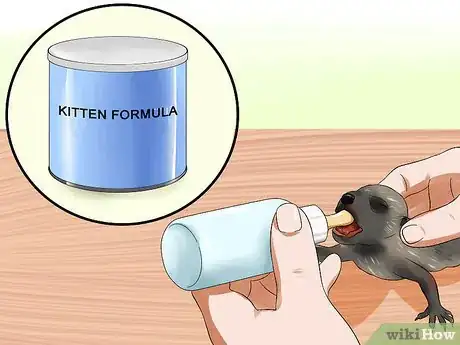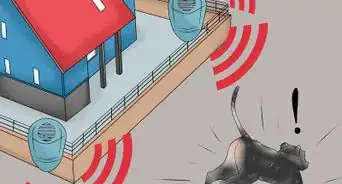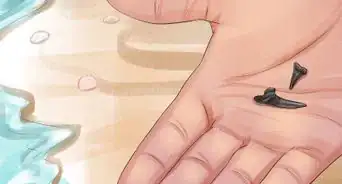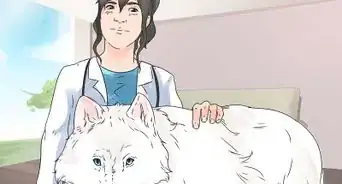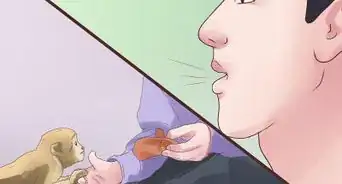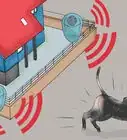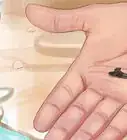This article was co-authored by wikiHow Staff. Our trained team of editors and researchers validate articles for accuracy and comprehensiveness. wikiHow's Content Management Team carefully monitors the work from our editorial staff to ensure that each article is backed by trusted research and meets our high quality standards.
wikiHow marks an article as reader-approved once it receives enough positive feedback. In this case, 93% of readers who voted found the article helpful, earning it our reader-approved status.
This article has been viewed 144,252 times.
Learn more...
If you encounter an abandoned baby raccoon, and you are certain that he is orphaned, you may need to nurse him back to health. This will involve getting him warm and hydrated, and feeding him a milk replacement formula. Raccoons (even baby ones) can be dangerous, and can carry germs, so be very mindful when you handle him and wear gloves.
Steps
Selecting the Right Food
-
1Start with Pedialyte. Pedialyte is an electrolyte drink used to hydrate human babies that are sick. If your baby raccoon has been left alone for too long, you will want to start by feeding him Pedialyte, and hydrate him before moving on to a milk replacement. Pedialyte is sold in most drug stores.[1]
-
2Feed them KMR. When it comes to actual “food” for your baby raccoon, the very best choice is KMR, or kitten milk replacement, which can be found at most pet stores. This formula for baby cats will most closely resemble raccoon milk.Advertisement
-
3Feed them Esbilac. Esbilac is your second best option. This is a meal replacement formula for puppies. Like KMR, Esbilac is available at most pet stores. This milk replacement formula for baby dogs will be a suitable alternative to raccoon milk.
-
4Avoid milk. Cow’s milk, goat’s milk, soymilk, and most other milk products for humans will make the baby raccoon sick. Administering these products can lead to severe dehydration, malnutrition, and possibly even death.[2]
- Use human infant formula, only in an emergency.
-
5Gather additional supplies. In addition to the Pedialyte and KMR, you will need a few supplies. You’ll want to gather up an eyedropper, a pet bottle (or a human baby bottle with a premie nipple), a blanket, a washcloth or feather, and a hot water bottle.[3]
Feeding the Raccoon
-
1Make sure he’s warm. A baby raccoon will not be able to digest food until he is the proper temperature. If your baby raccoon has been left alone outside, he will likely need to be warmed before he can eat. Wrap him in a soft blanket and lay him next to a hot water bottle, until he feels warm to the touch.
-
2Check for dehydration. If the baby raccoon’s skin “tents up” when you pinch it, or if his eyes are sunken, he may be severely dehydrated and should be taken to a vet immediately. If he only seems mildly dehydrated, proceed by offering him rehydration solution (or Pedialyte).
-
3Determine how much to feed him. The amount you feed your baby raccoon will be based on his weight, so first you are going to have to weigh him in grams. (A kitchen scale or postal scale you have at home will work fine.) Once you know his weight, plan to offer him 5% of his body weight in milliliters (or ccs) at each feeding.[4]
- 60 gram = 3ml per feeding
- 100 gram = 5ml per feeding
- 200 gram = 10ml per feeding
- Offer him food 7-8 times per day.
-
4Feed him with an eyedropper. It will likely be best if you feed your baby raccoon with an eyedropper at first, so that you can control the amount of fluid he gets. Hold him on his belly, or slightly upright, and express the milk into his mouth little by little.[5]
- You may have to clamp your hand around his muzzle to maintain his grasp on the eyedropper.
- Never hold the raccoon on his back (the way you would hold a human baby).
-
5Feed him with a bottle. Once you have practiced feeding with an eyedropper, you may be able to move on to feeding with a pet bottle. (These are available for purchase at most pet stores.) As with the eyedropper, lay him on his belly, or slightly upright. Once you have inserted the nipple of the bottle into the raccoon’s mouth, massage his back from his neck to the base of this tail to encourage a “purring” response and stimulate sucking.[6]
-
6Stimulate waste removal. This step is crucial to the survival of your baby raccoon. Mother raccoons normally lick their babies to stimulate urination and defecation. As a surrogate raccoon mother, you will need to stimulate the urethra and anus of the raccoon using a warm washcloth or feather. This must be done before and after each feeding, until you see the baby raccoon eliminating waste on its own.[7]
-
7Integrate solids. When your baby raccoon’s teeth begin to emerge, it is important to start incorporating solid foods. You can begin by mixing a bit of crushed kitten food with his formula. Move on to feeding dry kitten food, cooked eggs, soft fruits, and oatmeal.[8]
Hydrating the Raccoon
-
1Offer hydration solution first. When you encounter an abandoned baby raccoon in the wild, it is very likely that he is dehydrated. Before you can offer him any food, you must offer a hydration solution (or Pedialyte). Offer this in an eye-dropper or pet baby bottle.
- Look for plain, unflavored, unsweetened Pedialyte.
-
2Make a homemade “hydration solution.” In an emergency, you can make a homemade rehydration solution. Mix ½ teaspoon salt + ½ tablespoon of sugar + 2 cups of water. Warm this mixture slightly to dissolve the sugar and salt. Use this only until you can get to the store and purchase Pedialyte.[9]
-
3Heat solution to body temperature. Take your bottle of rehydration solution and submerge it in a container of hot water, until the solution warms to body temperature. Your baby raccoon is more likely to drink it if it mimics the temperature of his mama’s milk. It will also be more easily absorbed into his system this way.[10]
-
4Stimulate urination. Using a warm washcloth or feather, you will need to stimulate the anus and urethra of your baby raccoon until he begins to urinate. Continue to offer rehydration solution until your raccoon is producing light yellow urine.[11]
-
5Integrate milk replacement. When you feel that the baby is adequately hydrated, begin to integrate milk replacement formula (KMR or Esbilac). Start slowly, including small portions of milk replacement into his rehydration solution, and work up to full formula.[12]
- 3 parts rehydration solution, 1 part milk replacement for two feedings.
- 2 parts rehydration solution, 2 parts milk replacement for two feedings.
- 1 part rehydration solution, 3 parts milk replacement for one or two feedings.
- Pure milk replacement.
Community Q&A
-
QuestionWhat happens if I forget to stimulate a baby raccoon before and after feeding?
 Community AnswerIf you forget, they may refuse to eat and defecate. You shouldn't plan on forgetting.
Community AnswerIf you forget, they may refuse to eat and defecate. You shouldn't plan on forgetting. -
QuestionThere is an orphaned baby raccoon hanging around my yard. It's big enough to run and get away, but cried for its mum all night last night. How do I lure it to catch and care for it?
 Community AnswerYou could get animal control to do it. Raccoons can carry any dangerous diseases. If you really want to help it, animal control is the safest bet.
Community AnswerYou could get animal control to do it. Raccoons can carry any dangerous diseases. If you really want to help it, animal control is the safest bet. -
QuestionThe baby coon I found has maggots, but no open wounds. Why is this?
 Community AnswerThey might have a wound you can't see. I don't recommend touching the raccoon -- take it to a vet and let them examine it.
Community AnswerThey might have a wound you can't see. I don't recommend touching the raccoon -- take it to a vet and let them examine it.
Warnings
- Do not overfeed! Baby raccoons will over eat if they are allowed to.⧼thumbs_response⧽
- Be careful. Do not force the eyedropper/baby bottle into the baby's mouth.⧼thumbs_response⧽
- Wear gloves when you handle the baby raccoon.⧼thumbs_response⧽
Things You'll Need
- Eyedropper
- Pet bottle
- Milk replacement
- Rehydration solution (Pedialyte)
- Hot water bottle
- Blanket
- Feather or washcloth
References
- ↑ http://www.orphanedwildlifecare.com/raccooncare.htm#9
- ↑ http://www.orphanedwildlifecare.com/raccooncare.htm#9
- ↑ http://www.raccoonworld.com/raccoonrehab.html#2
- ↑ https://vetspace.2ndchance.info/caring-for-orphaned-and-injured-raccoons/
- ↑ http://www.orphanedwildlifecare.com/raccooncare.htm#9
- ↑ http://www.raccoonworld.com/raccoonrehab.html#2
- ↑ http://www.orphanedwildlifecare.com/raccooncare.htm#9
- ↑ http://www.raccoonworld.com/raccoonrehab.html#2
- ↑ http://www.orphanedwildlifecare.com/raccooncare.htm#9
About This Article
Before you feed a baby raccoon, gently pinch its skin and see if it stays bunched up or if it bounces back into place. If its skin stays bunched up, the baby raccoon is likely dehydrated, and you'll need to give it Pedialyte before anything else. If it's not dehydrated, you can give it kitten or puppy milk replacement. Use an eyedropper to feed the baby raccoon at first, and then move on to a bottle when you're more comfortable. To learn how much you should be feeding a baby raccoon, scroll down!
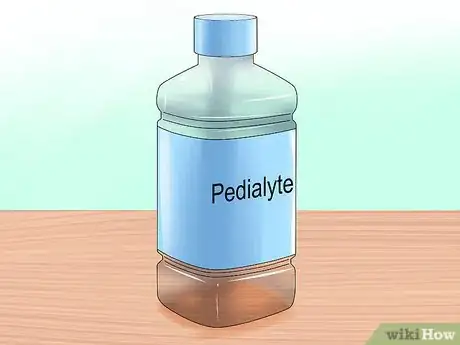
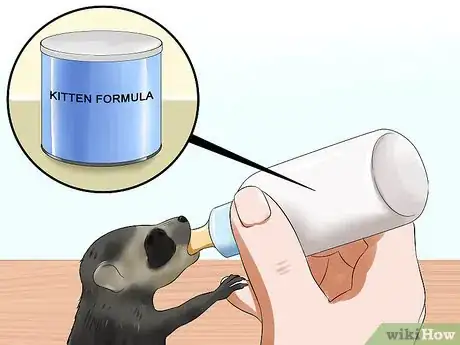
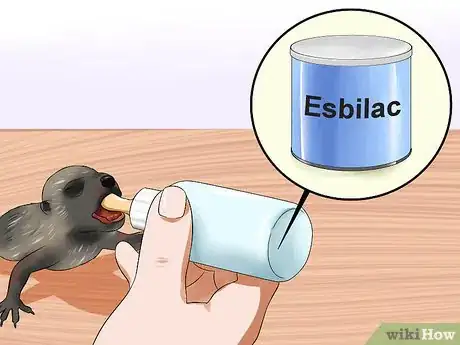
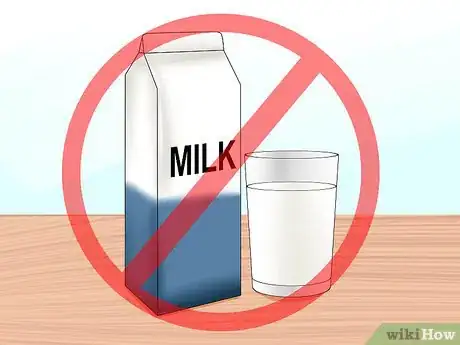
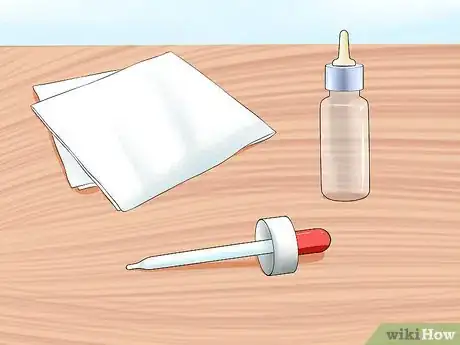
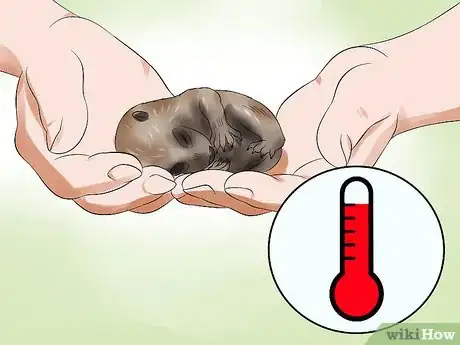
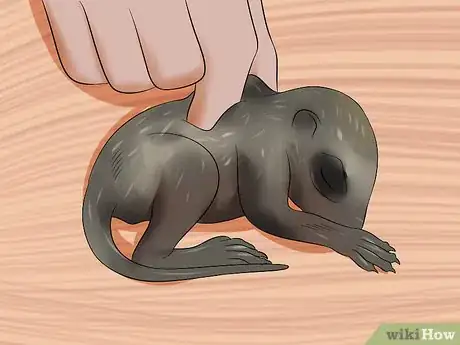
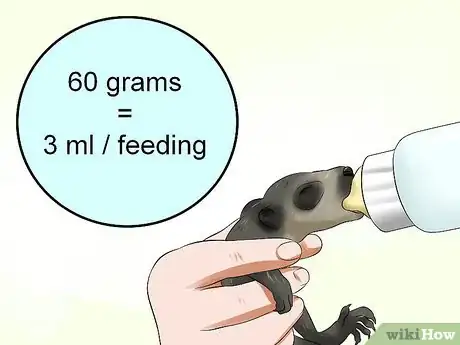
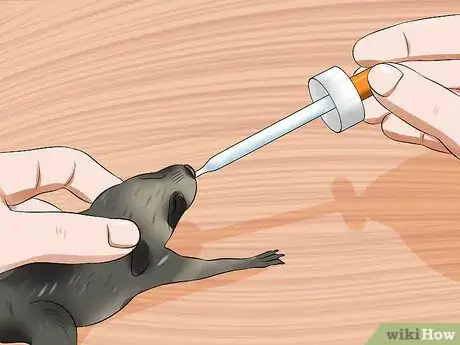
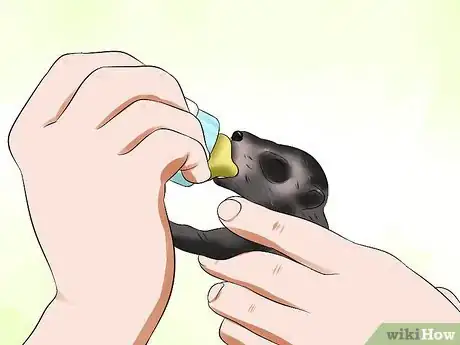
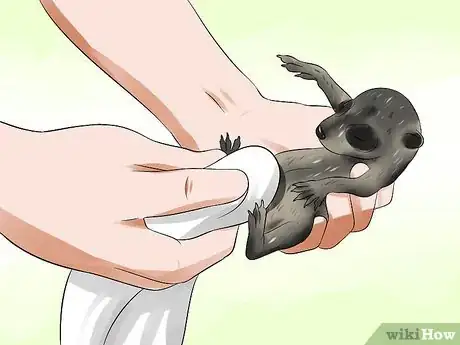
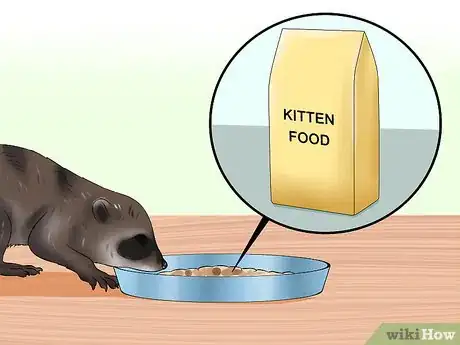
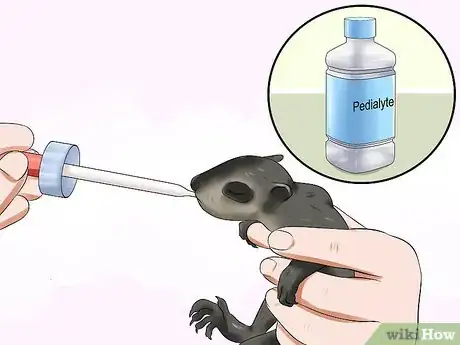
-Step-3-Version-2.webp)
